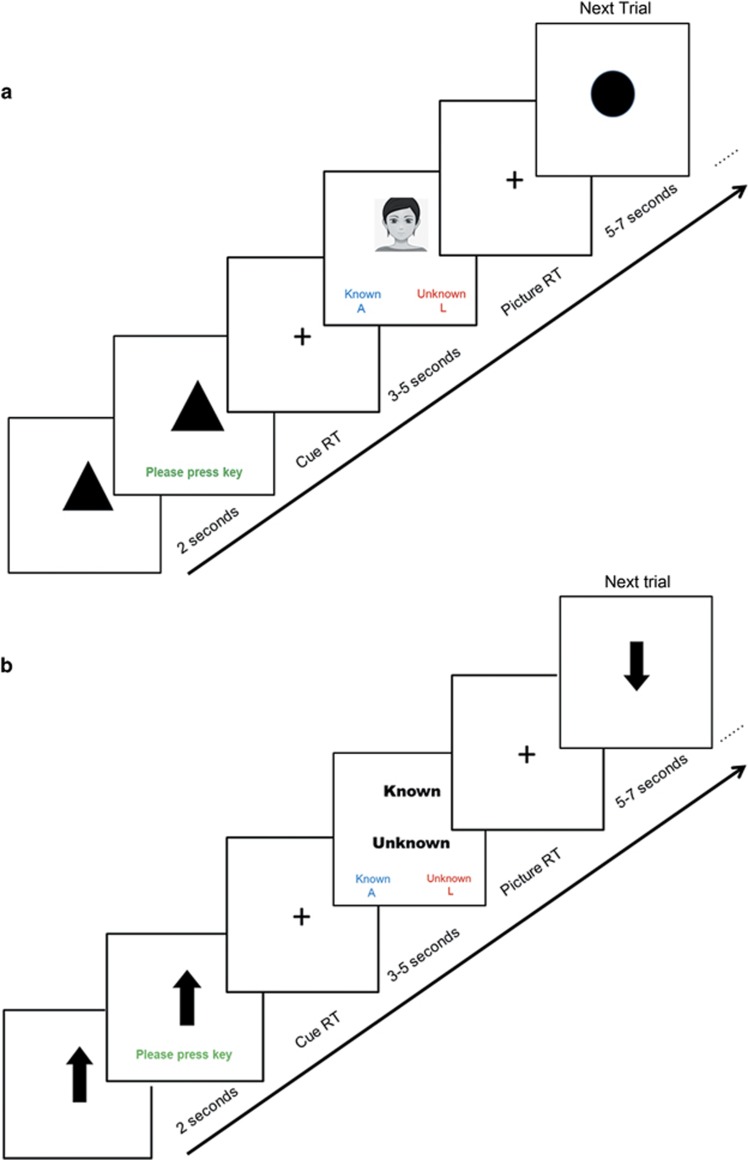Figure 1.
Trial structure of the DLT (a) and the CT (b). In the DLT, on each trial, participants were first presented with a circle/triangle-shaped cue, indicating whether an honest or dishonest response was required. Following 2 s and upon the appearance of the text prompt, the participants pressed a key to continue. Following another delay of 2 s (for the practice and training tasks) or 3–5 s, Poisson distributed (for the initial and testing tasks), a familiar or unfamiliar face was presented, and participants needed to make either an honest or dishonest response as fast and accurately as possible, by indicating whether the face belonged to a known or unknown person. The trial ended immediately following the participants’ responses, and the new trial commenced following no delay (for the practice and training tasks) or a jittered ITI of 5-7 s (for the initial and testing tasks). In the CT, the timeline was identical, except the cue was either an upward-pointing or downward-pointing arrow. The response screen displayed the words ‘Known’ and ‘Unknown’ one above the other, whose relative on-screen positions were equal-balanced across the 16 CT trials. Participants needed to make a response consistent with the word in the position that matched the direction of the arrow. Faces presented in the practice tasks did not appear in the actual tasks. Please note an avatar image rather than the actual face photo used in the task is included in this figure for protecting personal information. CT, control task; DLT, directed lie paradigm; ITI, inter-trial-interval; RT, reaction time.

